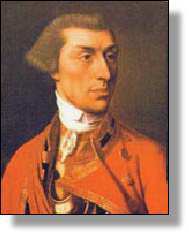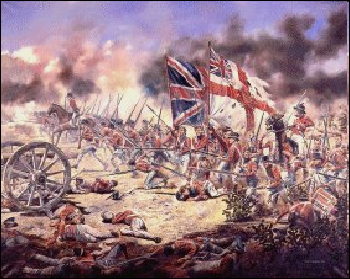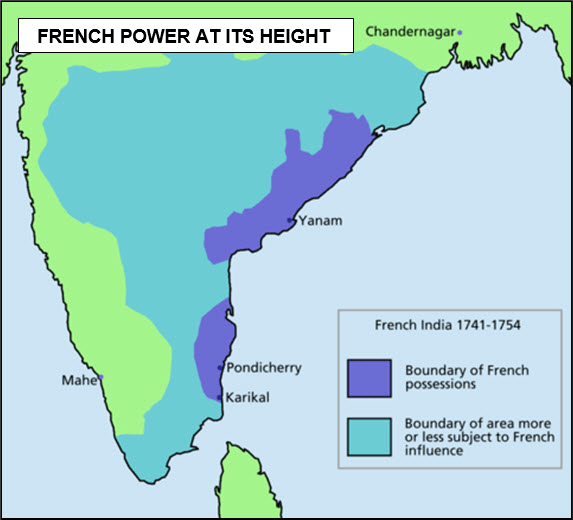


THE SEVEN YEARS WAR 1756 -
THE BATTLE OF WANDIWASH 1760
xxxxxAs we have seen, Clive’s victory at the Battle of Plassey in 1757 was the first and very significant step towards British rule of the whole of the sub-

 xxxxxIf the victory cunningly achieved by Robert Clive at the Battle of Plassey in 1757 weakened French hopes of maintaining a firm footing in India, the Battle of Wandiwash, three years later (1760) put an end to them altogether. It proved, in fact, the decisive conflict in the Anglo-
xxxxxIf the victory cunningly achieved by Robert Clive at the Battle of Plassey in 1757 weakened French hopes of maintaining a firm footing in India, the Battle of Wandiwash, three years later (1760) put an end to them altogether. It proved, in fact, the decisive conflict in the Anglo-
 xxxxxIt was at the beginning of 1760 that the French commander, Count de Lally having failed to take Madras, attempted to recover the fort of Wandiwash, near Pondicherry. There was, in fact, little going in his favour. The French fleet had withdrawn, supplies were very low, and he had insufficient money with which to purchase Indian allies. In January his army of some 2,000 men was set upon by a slightly smaller British force under the command of the Irish general Sir Eyre Coote (illustrated above). In the ensuing battle the French were routed and one of their best generals, the Marquis de Bussy, was captured. They withdrew to their trading station at Pondicherry where, after a siege lasting some eight months, they were forced to surrender. It was a humiliating ending for French endeavours in India, and for it Lally paid the supreme price. On returning to France, he was tried in Paris for dereliction of duty, found guilty, and executed.
xxxxxIt was at the beginning of 1760 that the French commander, Count de Lally having failed to take Madras, attempted to recover the fort of Wandiwash, near Pondicherry. There was, in fact, little going in his favour. The French fleet had withdrawn, supplies were very low, and he had insufficient money with which to purchase Indian allies. In January his army of some 2,000 men was set upon by a slightly smaller British force under the command of the Irish general Sir Eyre Coote (illustrated above). In the ensuing battle the French were routed and one of their best generals, the Marquis de Bussy, was captured. They withdrew to their trading station at Pondicherry where, after a siege lasting some eight months, they were forced to surrender. It was a humiliating ending for French endeavours in India, and for it Lally paid the supreme price. On returning to France, he was tried in Paris for dereliction of duty, found guilty, and executed.
xxxxxAs we shall see, the Treaty of Paris in 1763 (G3a) brought an end to the Seven Years’ War. With the French gone and the Mughal empire falling apart at the seams, British rule over this vast sub-
Acknowledgements
Coote: detail, attributed to the English portrait painter Henry Robert Morland (c1716-
G2-


